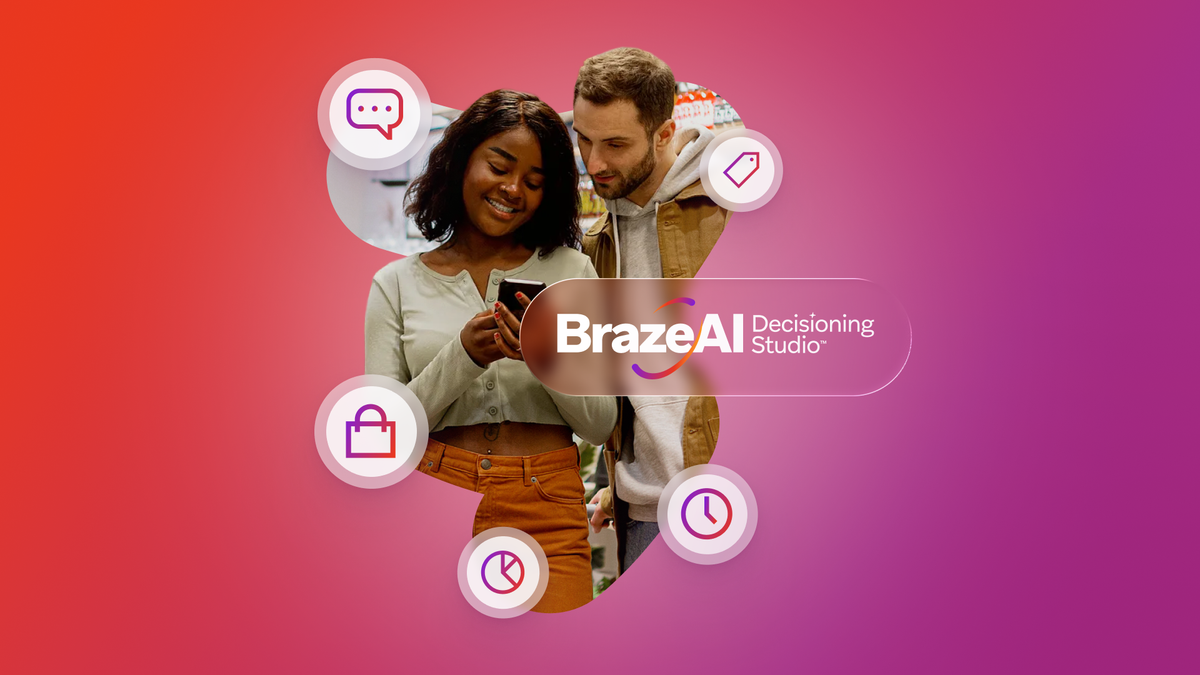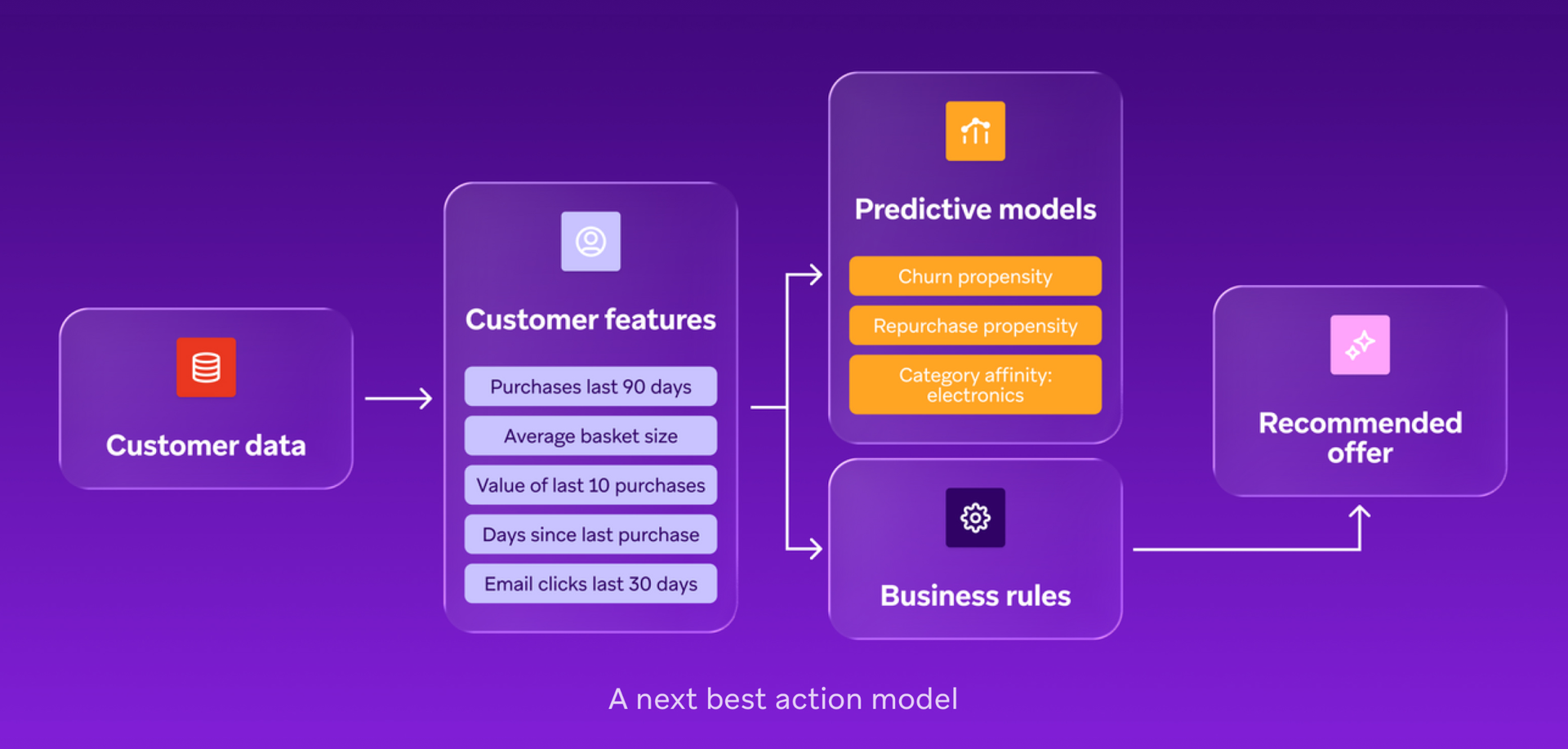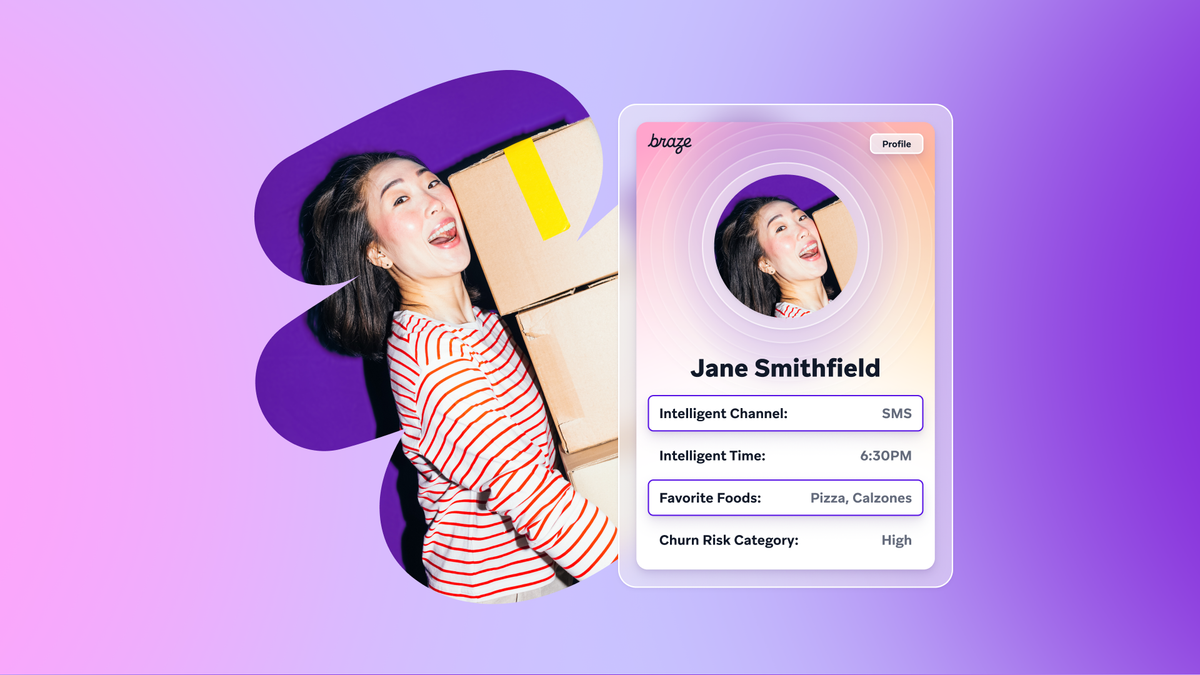Retail personalization in the AI era: How AI decisioning revolutionizes customer relationships
Published on November 13, 2025/Last edited on November 13, 2025/5 min read


Meredith Mitchell
Industry Marketing Lead, Retail & eCommerceCustomer engagement is at an important inflection point. New technologies like artificial intelligence (AI) are helping retail marketers realize the dream of true 1:1 personalization, evolving the way brands create long-lasting relationships with their customers.
AI is built on machine learning, which retail marketers have been using for years to predict churn, personalize the next best action customers may take, and personalize campaigns based on first-party data and segments or audiences.
However, AI decisioning, the next wave of 1:1 personalization is built differently. Where most AI models are built on predictive machine learning or large language models, AI decisioning uses reinforcement learning to personalize every aspect of a retailer’s lifecycle campaign: Channel, time of day, frequency, message, etc. The model works autonomously, constantly learning and experimenting to create personalized decisions for every customer.
The result is 1:1 personalization at scale. Explore what that looks like with examples of how brands can leverage AI decisioning.
The traditional approach to retail personalization
You may be thinking: How is AI decisioning different from previous iterations of personalization? Most AI models used by marketers today use a “next best action” approach to personalization. Let’s say a retailer is running a personalized campaign to shoppers interested in shoes. Traditional next best action models start with first-party data and bucket customers into categories like “shoe purchases in the last 90 days” or “average order value of last three shoe purchases.”
Retail marketers would then feed these features into a predictive model that may score customers on their likelihood to repurchase dress shoes vs. sneakers or sandals. These scores turn into a business rule which determines the category of shoes each customer is likely to purchase.

How next best action personalization falls short
Five years ago, predicting the pair of shoes a customer is mostly likely to purchase was the height of personalization. But there are several ways next best action personalization falls short. Most likely, the predictive model recommended a pair of shoes because the customer had a high “affinity” score for that category of shoe, which means the model assumed they were most likely to purchase the same type of shoes based on their previous purchase history. So customers get “personalization” that may simply be a constant feedback loop of sameness. Bought a pair of running shoes? Here are six more running shoes you might find interesting.
Just because someone is a runner doesn’t mean they are only interested in running shoes. The predictive model that reasonably suggested the new pair of running shoes runs the risk of creating an echo chamber that only recommends running products when that customer may be interested in dress shoes, new winter boots, or any number of categories that require new business rules and previous purchases for the model to understand.
But let’s say the predictive model is always right, and constantly recommends running shoes to a customer who is only interested in that category of shoe. Does this mean every campaign is personalized to each unique customer? And if so, does that mean customers will be motivated to make a purchase?
The next evolution in retail personalization
The short answer to both questions is no. Offering someone the next best purchase may not be personalized to what they’re looking for in the moment because the next best action is still based on how audiences are segmented and not necessarily on their individual preferences. And the right product doesn’t mean much if customers aren’t motivated to shop.
Unlike many common personalization models, AI decisioning motivates customers to take action. AI decisioning uses reinforcement learning to take a next best everything approach to lifecycle marketing.
AI decisioning not only finds the next best product recommendation based on individual customer preferences, it personalizes the best channel, time of day, day of week, frequency, message, creative or any other dimension necessary for unique customers to convert.
AI decisioning agents learn from their environment through constant learning and experimentation. The result is true 1:1 personalization based not on an echo chamber but on real customer profiles, constant and autonomous experimentation, and the goal to increase conversions.
The future of retail customer engagement
AI decisioning helps retailers realize the dream of true 1:1 personalization. By leveraging rich first-party data to offer relevant campaigns on an individual level, BrazeAI Decisioning Studio™ helps retail brands build deeper, more human relationships with customers.

Braze is building the future of AI-driven marketing, where AI agents allow marketers to become strategic conductors of composable and intelligent capabilities. By meeting customers with actions that motivate them to convert, AI decisioning helps marketers organize their campaigns around the kind of 1:1 personalization that leads to tangible business results.
To learn more, visit the BrazeAI Decisioning Studio™ page today.
Forward-Looking Statements
This blog post contains “forward-looking statements” within the meaning of the “safe harbor” provisions of the Private Securities Litigation Reform Act of 1995, including but not limited to, statements regarding the performance of and expected benefits from Braze and its products and features, including without limitation BrazeAI Decisioning Studio™. These forward-looking statements are based on the current assumptions, expectations and beliefs of Braze, and are subject to substantial risks, uncertainties and changes in circumstances that may cause actual results, performance or achievements to be materially different from any future results, performance or achievements expressed or implied by the forward-looking statements. Further information on potential factors that could affect Braze results are included in the Braze Annual Report on Form 10-Q for the fiscal quarter ended July 31, 2025, filed with the U.S. Securities and Exchange Commission on September 5, 2025, and the other public filings of Braze with the U.S. Securities and Exchange Commission. The forward-looking statements included in this blog post represent the views of Braze only as of the date of this blog post, and Braze assumes no obligation, and does not intend to update these forward-looking statements, except as required by law.
Related Tags
Releated Content
View the Blog
Retail personalization in the AI era: How AI decisioning revolutionizes customer relationships

Meredith Mitchell

In-app surveys: How to collect real-time feedback that improves every mobile experience

Team Braze

Personalization in Retail: Strategies, Examples, and AI-Driven Wins
